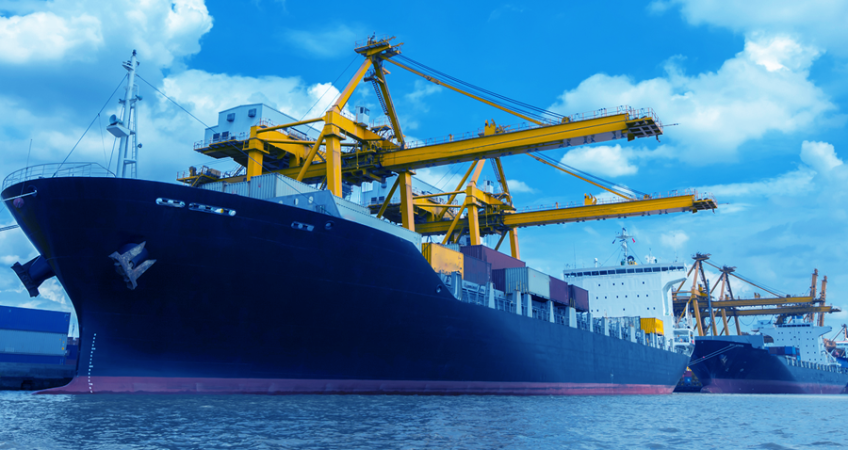
In the ever-evolving world of international trade, ocean freight remains a cornerstone of global commerce. As one of the most cost-effective and efficient ways to transport goods across the world, ocean freight plays a critical role in connecting markets, businesses, and consumers. Whether you’re a business owner, a logistics professional, or someone interested in the shipping industry, this guide will help you understand the essentials of ocean freight and why it continues to dominate the transportation sector.
What is Ocean Freight?
Ocean freight refers to the transportation of goods via cargo ships across international waters. This method of shipping is widely used for large and heavy shipments that would be impractical or too expensive to transport by air. With major ports spanning across continents, ocean freight facilitates the movement of raw materials, manufactured goods, and commodities worldwide.
Types of Ocean Freight Shipments
When opting for ocean freight, businesses can choose between different shipping options based on their cargo size and urgency. The most common types include:
- Full Container Load (FCL): This option is ideal for businesses shipping large volumes of goods. A single shipper uses an entire container, providing security and efficiency.
- Less than Container Load (LCL): For smaller shipments, LCL consolidates cargo from multiple shippers into a single container, reducing costs for businesses that do not require a full container.
- Roll-on/Roll-off (RoRo): Used primarily for vehicles and machinery, RoRo ships allow cargo to be rolled directly onto and off the vessel, making it a convenient transport method for wheeled cargo.
- Break Bulk Shipping: This is used for oversized or heavy cargo that cannot be containerized, such as industrial machinery, construction materials, or large equipment.
- Bulk Shipping: Used for commodities like coal, grains, and oil, bulk shipping involves transporting large quantities of unpackaged goods in specialized vessels.
Key Advantages of Ocean Freight
Ocean freight offers several benefits that make it a preferred choice for international shipping:
- Cost-Effectiveness: Compared to air freight, ocean freight is significantly cheaper, especially for large and heavy shipments.
- High Capacity: Cargo ships can transport massive amounts of goods, making it ideal for businesses moving bulk shipments.
- Eco-Friendly: With a lower carbon footprint per ton compared to air transport, ocean shipping is a more sustainable option.
- Reliable and Established Infrastructure: With well-established routes and ports worldwide, ocean freight provides a structured and dependable transport system.
Factors Affecting Ocean Freight Costs
Several factors influence the cost of ocean freight, including:
- Container Size & Type: The choice between a 20-foot and 40-foot container, or specialized containers, impacts the shipping cost.
- Fuel Prices: As fuel costs fluctuate, so do freight rates.
- Customs & Duties: Taxes and import duties vary by country and affect overall expenses.
- Peak Season Demand: Shipping rates increase during peak trade seasons, such as pre-holiday periods.
- Port Charges & Handling Fees: Each port has specific charges related to cargo handling, storage, and processing.
- Currency Exchange Rates: Since international shipping involves multiple currencies, exchange rate fluctuations can impact pricing.
The Ocean Freight Shipping Process
Shipping goods via ocean freight involves a structured process:
- Booking & Documentation: Businesses book shipments with a freight forwarder and complete necessary paperwork, including the Bill of Lading, commercial invoice, and packing list.
- Cargo Packing & Loading: Goods are packed securely, loaded into containers, and transported to the departure port.
- Customs Clearance: The shipment undergoes export clearance before being loaded onto the vessel.
- Ocean Transit: The cargo is transported across the sea to the destination port.
- Arrival & Unloading: Once at the destination port, the cargo is unloaded and goes through import customs clearance.
- Final Delivery: Goods are transported to their final destination via trucking or rail services.
Challenges in Ocean Freight & How to Overcome Them
While ocean freight is efficient, it comes with challenges such as:
- Delays Due to Weather or Port Congestion: Working with experienced freight forwarders can help businesses plan for potential delays.
- Customs Complications: Ensuring all documentation is accurate and complete helps prevent customs clearance issues.
- Container Shortages: Staying updated on market conditions and pre-booking shipments in advance can mitigate container availability problems.
- Cargo Damage & Loss: Proper packaging, cargo insurance, and working with reliable carriers reduce risks.
Future Trends in Ocean Freight
The shipping industry is evolving with technological advancements and sustainability initiatives. Some key trends include:
- Digitalization & AI: Advanced tracking systems, automation, and AI-driven analytics enhance efficiency in shipping operations.
- Sustainable Shipping: The industry is adopting greener solutions like LNG-powered ships and carbon-neutral logistics to reduce emissions.
- Blockchain in Logistics: Blockchain technology is being integrated for better transparency and security in supply chain management.
- Smart Ports: Ports are upgrading with automated cranes, real-time tracking, and AI-driven scheduling to improve cargo handling efficiency.
Why Choose Transglobal for Your Ocean Freight Needs?
At Transglobal, we specialize in providing seamless ocean freight solutions tailored to your business needs. With extensive industry expertise, a strong global network, and a commitment to efficiency, we ensure that your cargo reaches its destination safely and cost-effectively. Our team handles everything from freight booking to customs clearance, so you can focus on growing your business.
Conclusion
Ocean freight continues to be a vital part of international trade, offering businesses an affordable and reliable way to transport goods worldwide. By understanding the different types of ocean freight, cost factors, and challenges, businesses can optimize their shipping operations for maximum efficiency. As technology and sustainability initiatives shape the future of shipping, companies like Transglobal are at the forefront, ensuring seamless and innovative freight solutions for global trade.
If you’re looking for a trusted ocean freight partner, contact Transglobal today and let us help you navigate the complexities of international shipping with ease.
